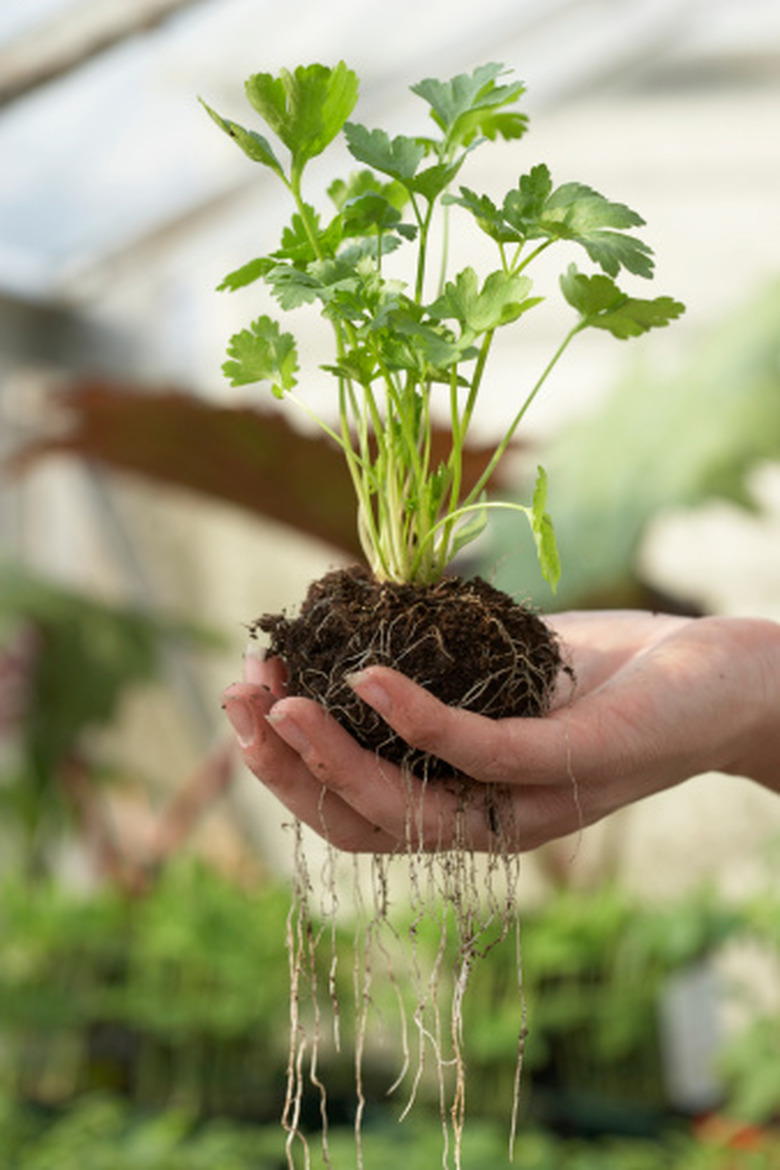Facts About The Root Cells Of Plants
Cells are the building blocks of all life across the planet, so it should come as no surprise that they play several important roles in keeping plants healthy and thriving. That's especially true in the plant roots, where cells work to make sure that the plant has the food and water it needs to survive. Learning facts about those root cells can help you see how important those tiny cells are in plants worldwide.
Inside a Plant Root System
Inside a Plant Root System
When you're walking around outside and see a plant, you're seeing the shoot system, or the part of the plant that lives above ground. In many plants, it's visually attractive, containing all kinds of vibrant colors or beautiful flowers, leaves or fruits.
What you usually can't see is the plant's **root system,** or the part of the plant that lives underground. Its often spindly brown structures might not be as pretty as the shoot system, but it's incredibly important. The root cells work together to provide the plant with the water and nutrients it needs to survive.
Root Hairs
Root Hairs
There is not one single root cell in a plant. Instead, there are many specialized cells in plant roots that vary depending on the type of plants and the environments where they grow.
One important one is the trichoblast, which lives on the epidermis of a plant root. An epidermis is also sometimes referred to as the "skin" of the shoot system of the plant, and the function of the epidermis in roots is to act as a protective layer. It helps both to keep needed water inside the plant, and to keep out unwanted invaders like harmful fungi or bacteria.
In the root system, the epidermis cells often have a layer of root hairs on top of them. Usually, they are tiny, tubular extensions of the epidermis cell. They stick out of the root structure similar to the way hairs extend from our heads.
Root hairs aren't actually the roots. Typically, they don't live longer than **three weeks,** so they don't have the lasting power of roots that stabilize plants for tens or even hundreds of years. Root hair cells grow and reproduce more quickly than actual roots, which makes them great for biologists to study and learn about cell life. Their main (very important!) job is to absorb nearby water and nutrients.
Sometimes, transferring a plant from one pot to another can cause the root hairs to fall from or get scraped from the plant. This is why a plant might wilt a little after repotting because it doesn't have as many available root hairs to absorb food. Thankfully, though, root hairs grow quickly enough to repopulate and start to take in the nutrients from their new surroundings.
Other Roles of Roots
Other Roles of Roots
It's easy to forget about the cell roots of a plant, since they're underground. But that's where most of the work gets done to feed different types of plants worldwide. Roots work to absorb whatever is around them.
They take the nutrients from the surrounding soil that the plant needs to stay healthy, and they also absorb the water that gets into the soil either when people water the plants or through rainfall. Roots can then either store those essential nutrients for later, or transport them to the stem of the plant.
Root hairs also help to anchor a plant in its place, making sure that anything from strong winds to heavy rains can't uproot that plant and send it on its way. All in all, the roots might not be the prettiest part of any plant, but they help to provide the structure and nourishment that all plants need to stay healthy and alive.
Cite This Article
MLA
Dragani, Rachelle. "Facts About The Root Cells Of Plants" sciencing.com, https://www.sciencing.com/root-cells-plants-8552161/. 23 May 2019.
APA
Dragani, Rachelle. (2019, May 23). Facts About The Root Cells Of Plants. sciencing.com. Retrieved from https://www.sciencing.com/root-cells-plants-8552161/
Chicago
Dragani, Rachelle. Facts About The Root Cells Of Plants last modified March 24, 2022. https://www.sciencing.com/root-cells-plants-8552161/
